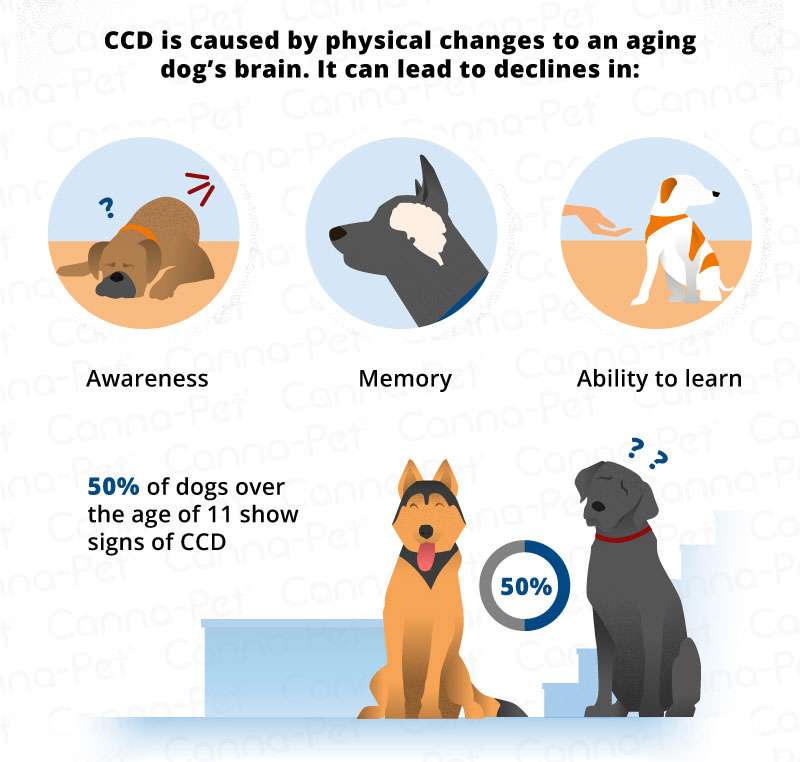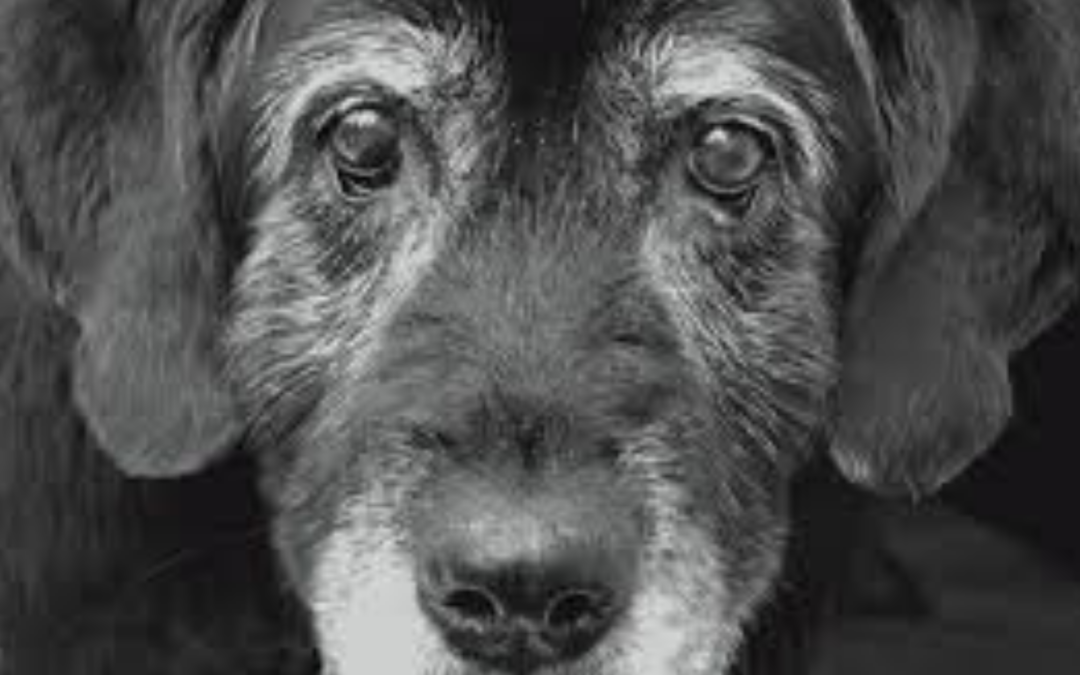Dementia, canine cognitive dysfunction (CCD), is commonly referred to as doggy dementia or doggy Alzheimer’s, just like in that of humans. The general understanding of canine cognitive dysfunction is an age-related neurobehavioral syndrome that leads to a decline in cognitive function. This decline may vary in its timeline, but can be devastating to the dog-human relationship and often requires a lot of care.
Why Do Dogs Get Dementia?
Similar to Alzheimer’s in people, dementia in senior dogs often result in altered behavior and memory loss. These changes may affect the quality of life of both the dogs as well as their humans, but by better understanding what is really occurring, measures may be taken to lessen the negative effects of this issue.

Signs to be Aware of
The signs of senior dementia in dogs revolve around the brain changes that occur as a dog reaches old age. These changes may be gradual and worsen as your dog continues to age, or they may seem more drastic in nature. Some manifestations may easily go unnoticed until your dog is outwardly affected by them, and are quite common in dogs over the age of eleven.
Symptoms Include:
- Anxiety
- Soiling in the house
- Becoming disorientation
- Barking without reason
- Going to the wrong side of the door
- Lack of interaction with people or other pets
- Decrease or lack of appetite
- Lower threshold for aggressive behavior
- Irregular sleeping patterns
- Staring at the walls
- Repetitive Behaviors
- Pacing
Causes
The symptoms are a result of changes or damage in the brain but different symptoms and types of dementia may arise from different brain issues. No one completely understands the complete causes of dementia but there are some things that are known due to the similarities dogs have with humans with dementia. Certain proteins that accumulate in the brain around neurons and the breakdown of neurons are two things that disrupt the normal transmission of information in the brain, and therefore contribute to senior dementia in dogs.
The Quality of Life Scale, or HHHHHMM Scale, is often used to aid in determining whether or not a dog has changed as it ages. This scale goes through the signs of dementia and includes a review of the dog’s behaviors. Hurt, Hunger, Hydration, Hygiene, Happiness, Mobility and More good days than bad are assessed in the HHHHHMM scale. This scale also helps a pet parent decide whether or not their pet’s quality of life is still good as the dementia progresses.
While there is no cure for dementia, there are preventions that can be taken to limit its progression.
There are nutritional aids that can be administered to help potentially delay brain changes as a dog ages, and some experts recommend supplementing dogs before they begin to show signs of senior dementia. However, there is no specific treatment or preventative regimen. If you are concerned with CCD developing in your senior dog, talk with your veterinarian about possible preventative supplements. They may include antioxidants, omega-3 fatty acids, and medium-chain triglycerides (MCT’s), as they are the main dietary components often discussed regarding brain health.
Managing your dog’s behavior and environment can play a vital role in helping them maintain healthy emotion well-being. Spend more time playing or walking; dog-proof your house; provide proper toileting care, including pads or even doggie diapers; or feed your dog specialized senior care food.
Many dogs that are suffering from CCD experience some level of anxiety. It can be stressful if they awaken and feel alone in the middle of the night, or find themselves in the corner of a room and can’t remember how to get out of that spot. Managing anxiety can be dog specific, but could include soothing music, long walks, petting, or even dog specific pheromones.
I can speak from my experience with Bolo and Nammie, of which both suffered dementia to an extent. I tried to keep my home quiet and comfortable. I didn’t unnecessarily move furniture or anything else that would have made for confusion or distress. I regularly provided exercise, massage and a homemade diet of brown rice and chicken or fish. I feel these things, along with lots of love, kept my dogs as well as possible, helping them to lead long, healthy lives.


We are struggling with this now with Gaela.🙁 The hardest part is when to know to let them go.
Thanks Kelly for all the great info.
Sorry to hear that Bonnie, the hardest decision to make for sure. I’m sure she’ll let you know when it’s time. Sending hugs XX